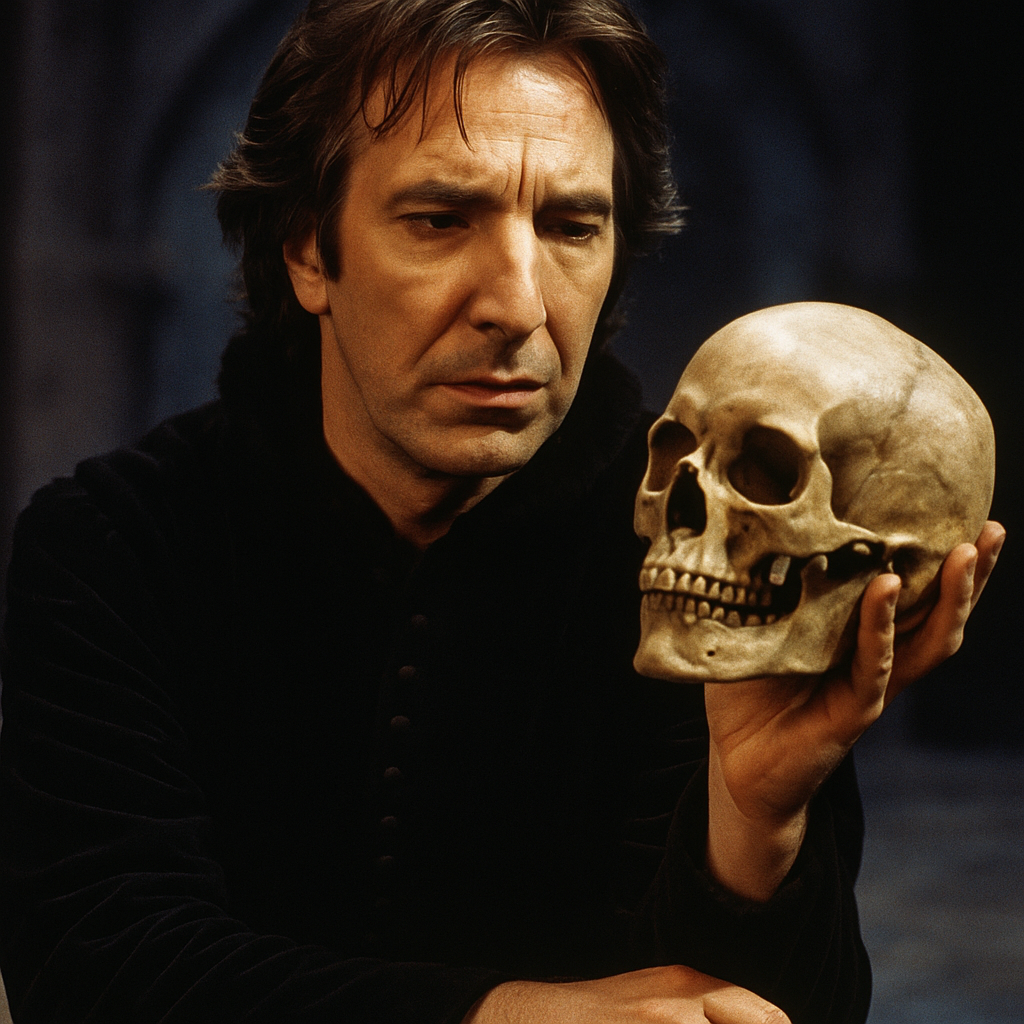Between Being and Nonbeing: A Gaze into the Abyss
In the half-darkness of the stage, where light barely touches his face, a figure in black contemplates the boundary of life. This is a moment of confrontation with eternity – a man in black attire, with a deep, piercing gaze holds a human skull, as if weighing the very essence of existence in his palm.
Alan Rickman – master of refined acting technique, possessor of a velvety, deep voice that penetrates the soul – here embodies a Shakespearean archetype with particular depth. His eyes, which always knew how to convey multilayered emotions without a single word, are now fixed upon the white skull. In this gaze lies Rickman’s signature blend of melancholy, intellectual depth, and restrained passion.
His face is a painterly canvas of half-tones and contrasts. The slightly raised eyebrows characteristic of Rickman create an expression of philosophical doubt, while his thin lips form an almost imperceptible bitter smile. This is the very mastery of creating multidimensional characters through the smallest, almost invisible facial muscle movements for which he became renowned.
This moment is the quintessence of Rickman’s acting gift: the ability to freeze at the boundary of contrasts – life and death, strength and vulnerability, rational and emotional. His characteristic measured stillness of body combined with an extraordinarily expressive face creates a magnetic tension that forces the viewer to pause along with the actor in contemplation of transience and eternity.



